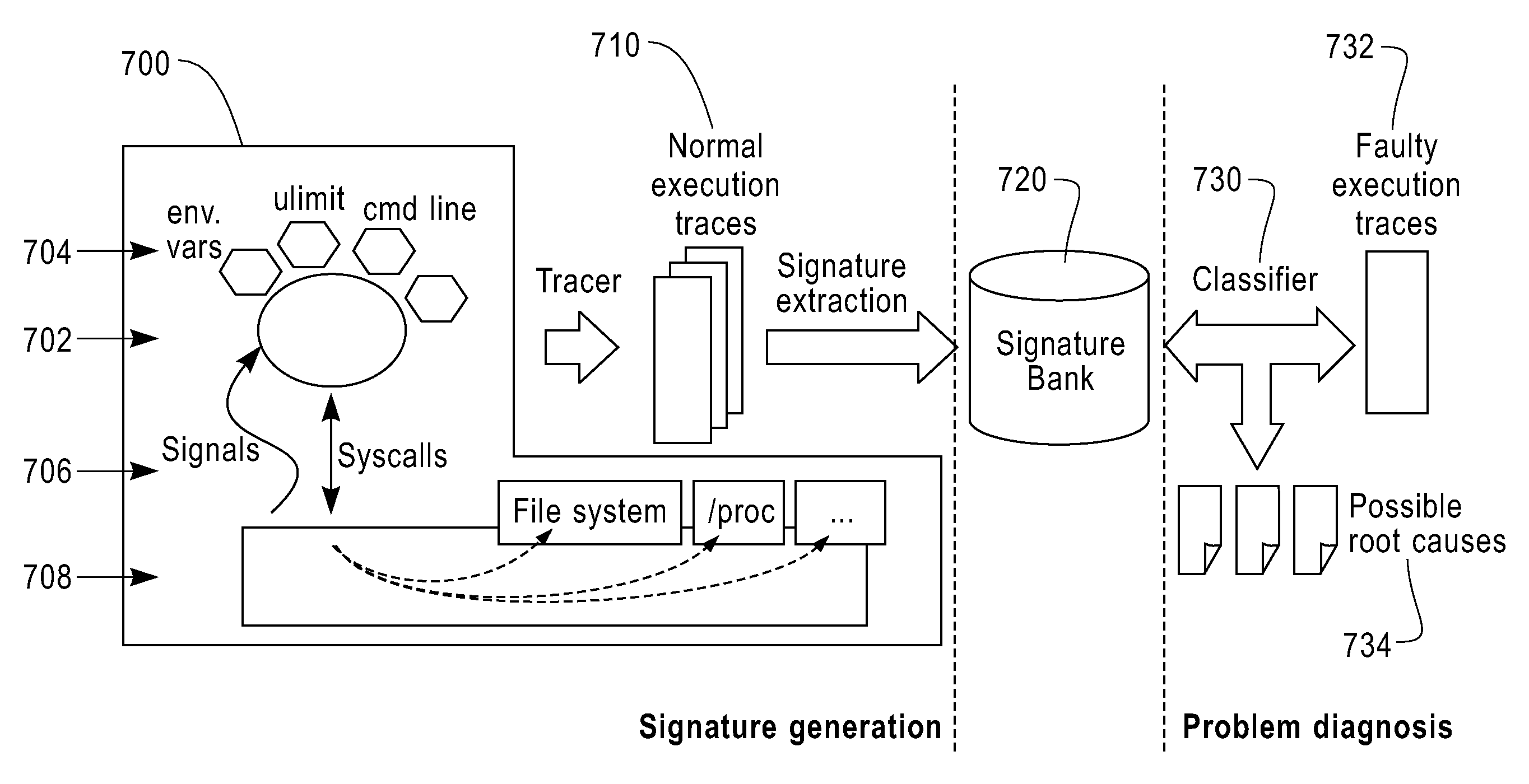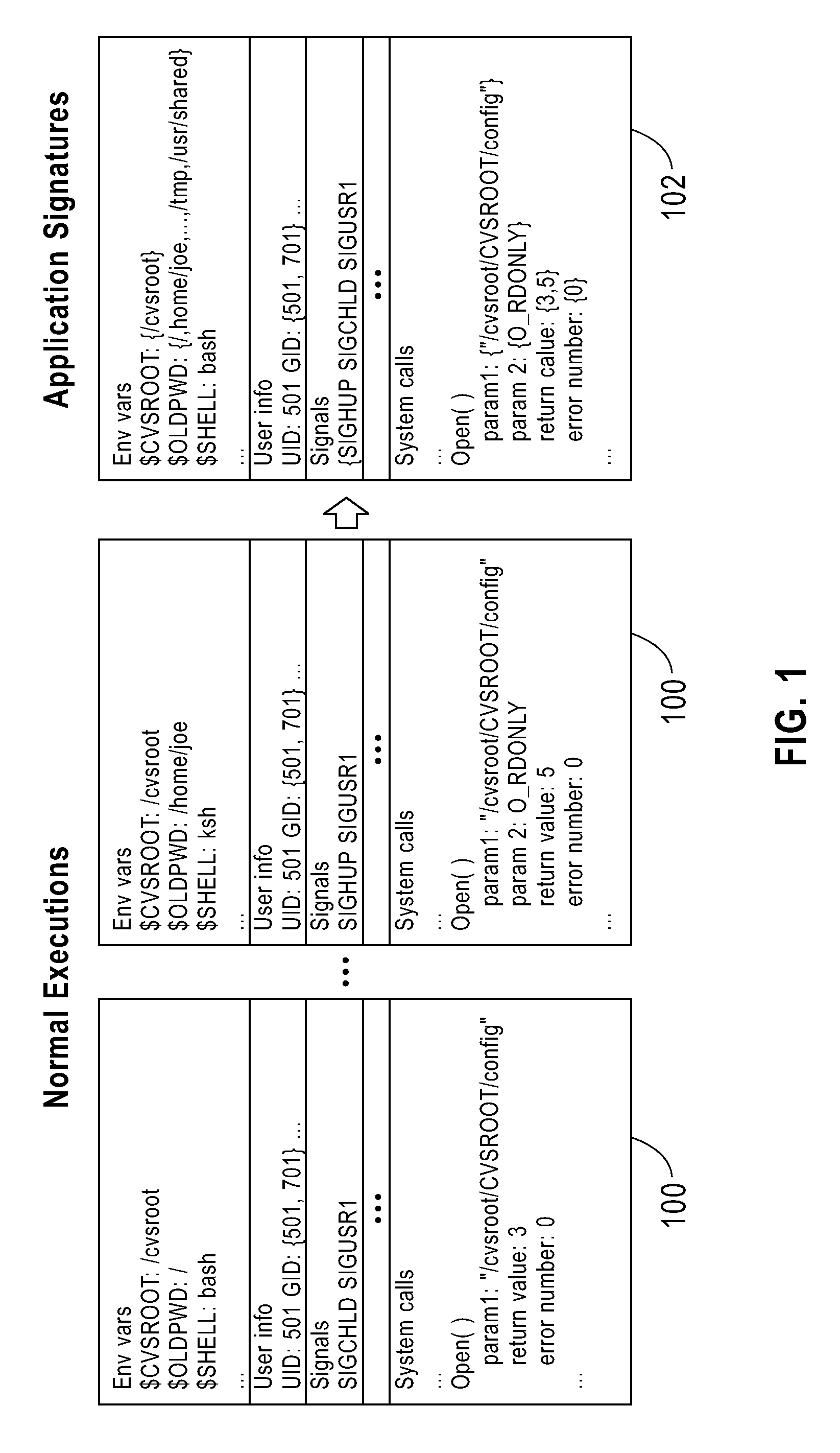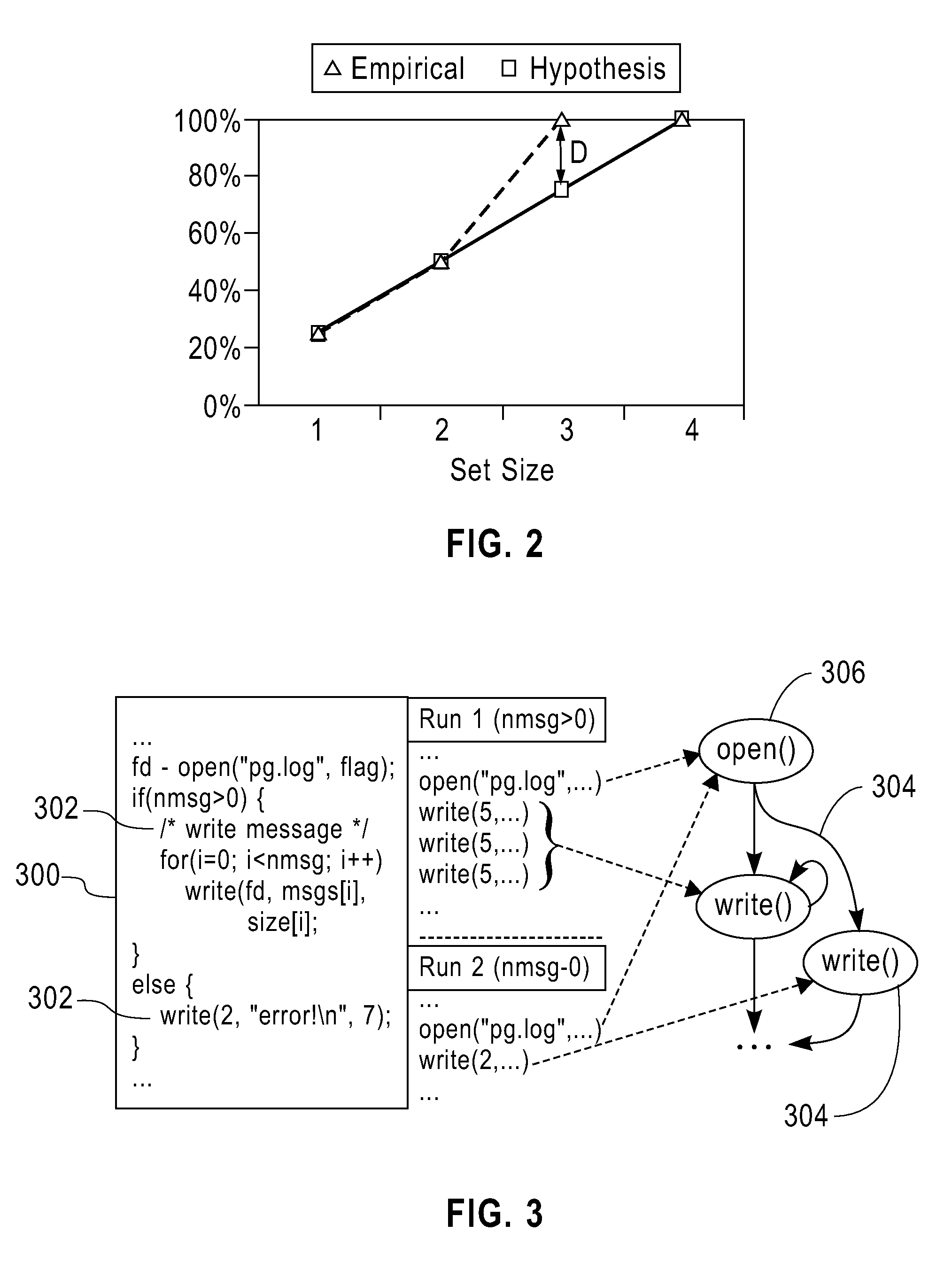Automatic software fault diagnosis by exploiting application signatures
a software fault and application signature technology, applied in the field of automatic software fault diagnosis by exploiting application signatures, can solve the problems of complex enterprise environment application problem diagnosis, high labor intensity, and high labor intensity, and achieve the effect of reasonable storage requirements and low labor intensity
- Summary
- Abstract
- Description
- Claims
- Application Information
AI Technical Summary
Benefits of technology
Problems solved by technology
Method used
Image
Examples
Embodiment Construction
[0037]The embodiments of the invention and the various features and advantageous details thereof are explained more fully with reference to the non-limiting examples that are illustrated in the accompanying drawings and detailed in the following description.
[0038]1. Introduction
[0039]In this disclosure, the embodiments herein present a black-box approach to automatically diagnose several types of application faults. The system creates a signature of normal application behaviors based on traces containing an extensive set of interactions between the application and the runtime environment gathered during multiple runs (or for a sufficiently long run). When an application fault occurs, the embodiments herein compare the resultant trace with the signature to characterize the deviation from normal behavior, and suggest possible root causes for the abnormal operation. Using output from the analysis, a system administrator, or user can significantly reduce the search space for a solution ...
PUM
 Login to View More
Login to View More Abstract
Description
Claims
Application Information
 Login to View More
Login to View More - R&D
- Intellectual Property
- Life Sciences
- Materials
- Tech Scout
- Unparalleled Data Quality
- Higher Quality Content
- 60% Fewer Hallucinations
Browse by: Latest US Patents, China's latest patents, Technical Efficacy Thesaurus, Application Domain, Technology Topic, Popular Technical Reports.
© 2025 PatSnap. All rights reserved.Legal|Privacy policy|Modern Slavery Act Transparency Statement|Sitemap|About US| Contact US: help@patsnap.com



